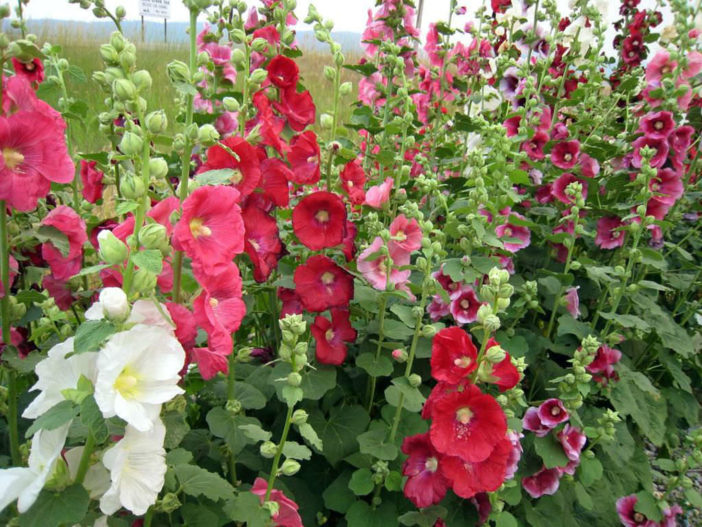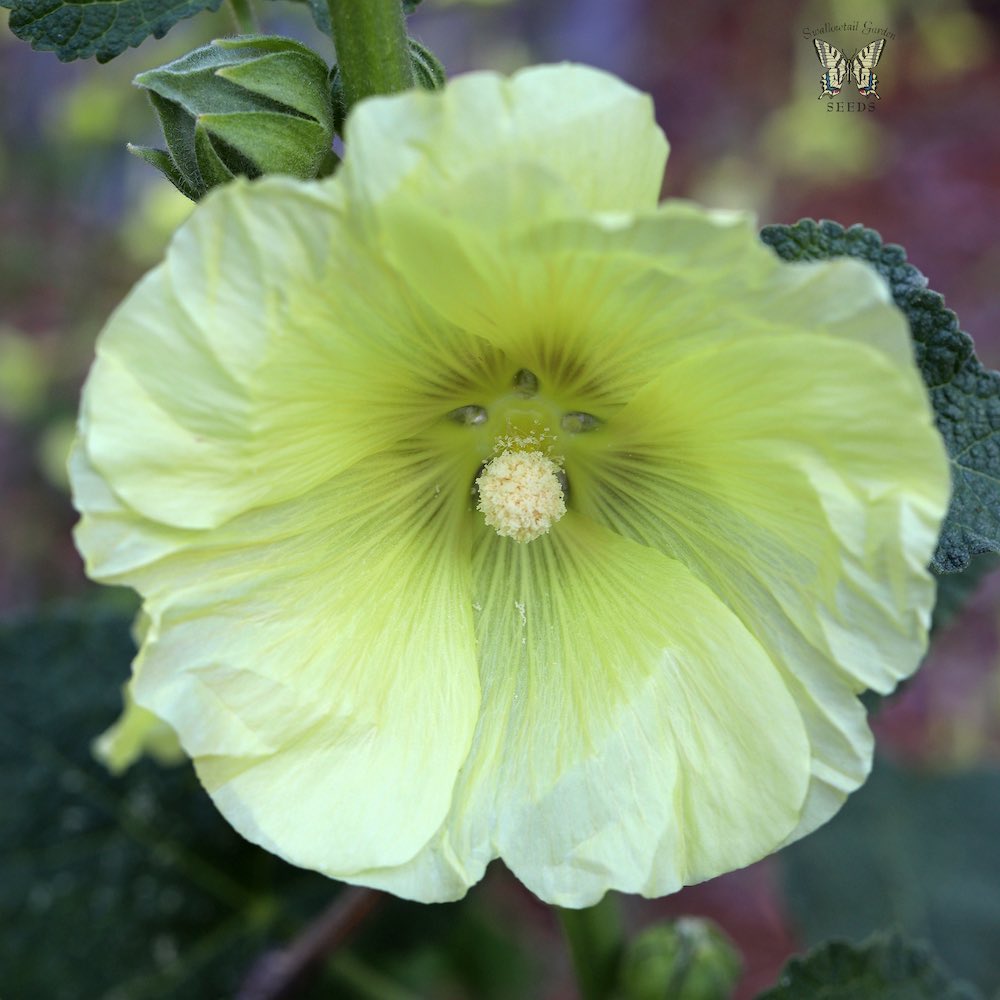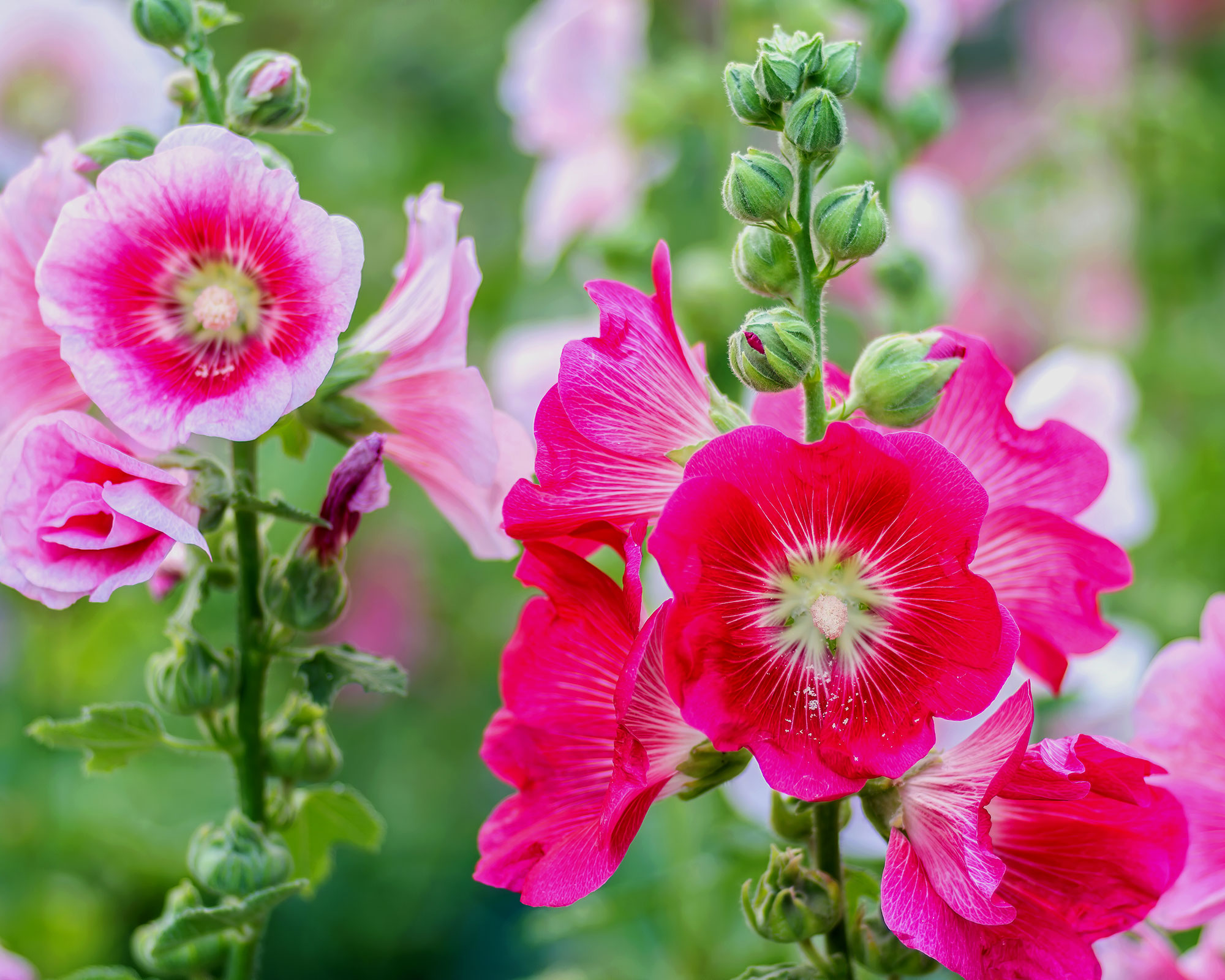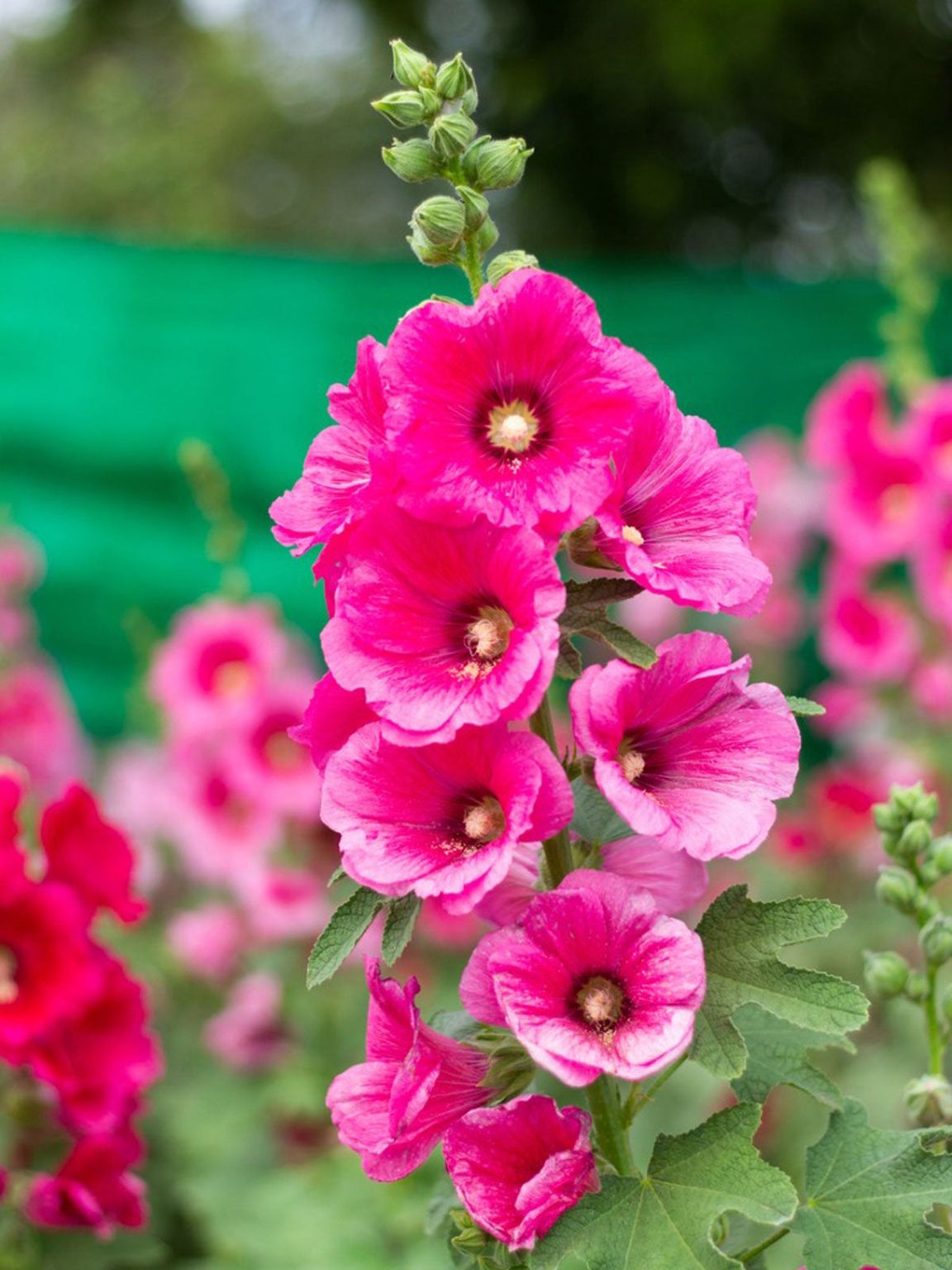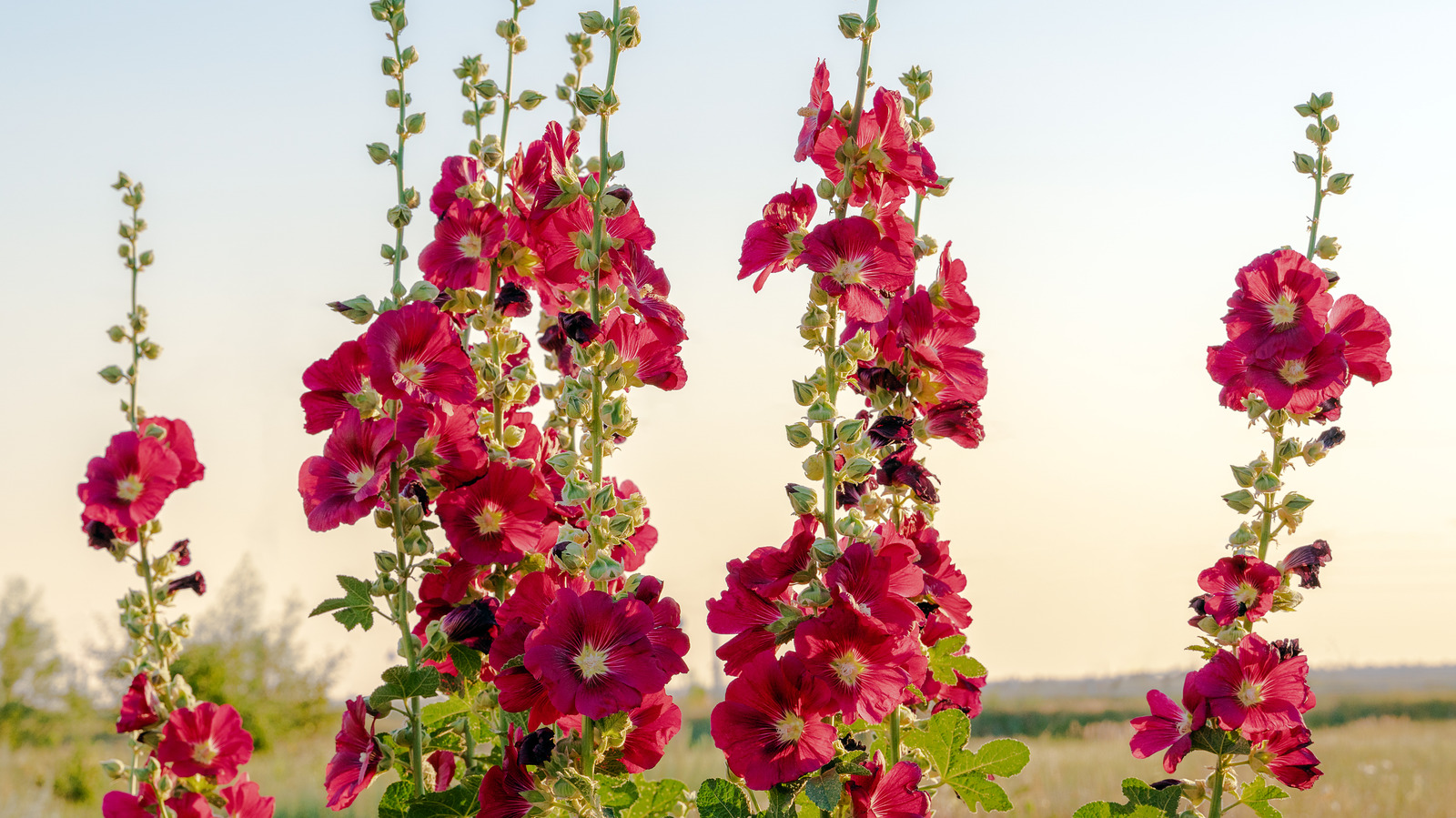Understanding the Life Cycle of Hollyhocks
Hollyhocks are a type of flowering plant that belongs to the mallow family. They are known for their tall, stately spikes of colorful flowers that can grow up to 9 feet tall. But before we dive into the question of whether hollyhocks are perennials or annuals, it’s essential to understand their life cycle. Hollyhocks are biennials, meaning they complete their life cycle over two growing seasons. In the first year, they produce a rosette of leaves, and in the second year, they send up a flowering stalk. After the flowers have bloomed and set seed, the plant dies back, but not before producing new offsets or seedlings that will grow into new plants.
This unique life cycle is crucial in understanding whether hollyhocks are perennials or annuals. While they don’t fit neatly into either category, they do have some characteristics of both. For example, hollyhocks come back year after year, but not in the same way that traditional perennials do. Instead, they produce new plants that grow from the offsets or seedlings produced by the parent plant.
So, are hollyhocks perennials or annuals? The answer is not a simple one. While they don’t meet the traditional definition of a perennial, they do have some perennial-like characteristics. In the next section, we’ll explore the differences between perennials and annuals in more detail, and examine how hollyhocks fit into this classification.
Perennials vs Annuals: What’s the Difference?
In the world of plant biology, plants are broadly classified into two categories: perennials and annuals. Understanding the difference between these two types of plants is crucial in determining whether hollyhocks are perennials or annuals. So, what sets perennials and annuals apart?
Perennials are plants that live for more than two years. They typically grow and produce flowers and seeds for multiple seasons, and often require regular maintenance to keep them healthy and thriving. Examples of perennials include roses, daylilies, and coneflowers. Perennials usually have a dormant period during the winter months, but they regrow in the spring, allowing them to come back year after year.
Annuals, on the other hand, are plants that complete their life cycle within a single growing season. They germinate, grow, produce flowers and seeds, and die all within a year. Examples of annuals include marigolds, zinnias, and petunias. Annuals typically do not regrow in the spring, and instead, need to be replanted every year.
So, where do hollyhocks fit into this classification? As we discussed earlier, hollyhocks are biennials, meaning they complete their life cycle over two growing seasons. But are they perennials or annuals? The answer is not a simple one, and it depends on various factors, including climate, soil quality, and maintenance. In the next section, we’ll explore how hollyhocks are classified and what this means for their care and maintenance.
Hollyhock Classification: Are They Perennials or Annuals?
Now that we’ve explored the basics of hollyhock biology and the difference between perennials and annuals, it’s time to answer the question: are hollyhocks perennials or annuals? The answer is not a simple one, as hollyhocks can be classified as both perennials and annuals, depending on the climate and growing conditions.
Technically, hollyhocks are perennials, as they can live for more than two years and come back year after year. However, in certain climates or conditions, hollyhocks may be grown as annuals. For example, in areas with harsh winters or extreme temperatures, hollyhocks may not survive the winter months and may need to be replanted every year.
In addition, hollyhocks can be sensitive to factors such as soil quality, watering, and pruning, which can affect their lifespan and behavior. In ideal conditions, hollyhocks can thrive as perennials, but in less-than-ideal conditions, they may behave more like annuals.
So, what does this mean for gardeners who want to grow hollyhocks? It means that with proper care and maintenance, hollyhocks can be grown as perennials, providing years of beauty and enjoyment. However, it’s also important to be aware of the potential challenges and limitations of growing hollyhocks in certain climates or conditions.
In the next section, we’ll explore the factors that can affect a hollyhock’s lifespan and behavior, and provide tips and advice on how to grow hollyhocks as perennials.
Factors Affecting Hollyhock Longevity
As we’ve discussed, hollyhocks are technically perennials, but their lifespan and behavior can be influenced by various factors. Climate, soil quality, watering, and pruning are just a few of the factors that can affect a hollyhock’s longevity and determine whether it behaves like a perennial or an annual.
Climate is one of the most significant factors affecting hollyhock longevity. In areas with harsh winters or extreme temperatures, hollyhocks may not survive the winter months and may need to be replanted every year. On the other hand, in regions with mild winters, hollyhocks can thrive as perennials, coming back year after year.
Soil quality is another crucial factor in determining a hollyhock’s lifespan. Hollyhocks prefer well-draining soil that is rich in organic matter. If the soil is poor or lacking in nutrients, hollyhocks may not thrive and may behave more like annuals.
Watering is also essential for hollyhock longevity. Hollyhocks need consistent moisture, especially during the growing season. However, overwatering can be detrimental to hollyhocks, leading to root rot and other problems.
Pruning is another factor that can affect a hollyhock’s lifespan. Pruning can help control the height and spread of hollyhocks, promote healthy growth, and encourage blooming. However, improper pruning can stress the plant and reduce its lifespan.
By understanding these factors and how they affect hollyhock longevity, gardeners can take steps to promote healthy growth and encourage their hollyhocks to behave like perennials. In the next section, we’ll provide tips and advice on how to grow hollyhocks as perennials, including choosing the right variety, providing optimal growing conditions, and performing regular maintenance tasks.
How to Grow Hollyhocks as Perennials
Now that we’ve discussed the factors that can affect a hollyhock’s lifespan, let’s dive into the specifics of how to grow hollyhocks as perennials. With the right care and maintenance, hollyhocks can thrive for years to come, providing a stunning display of color and beauty in your garden.
Choosing the right variety is crucial when growing hollyhocks as perennials. Look for varieties that are specifically bred for perennial growth, such as ‘Chater’s Double’ or ‘Majorette’. These varieties tend to be more robust and less prone to disease, making them ideal for perennial growth.
Providing optimal growing conditions is also essential for growing hollyhocks as perennials. Hollyhocks prefer full sun to partial shade and well-draining soil that is rich in organic matter. Make sure to plant your hollyhocks in a location that receives at least 6 hours of direct sunlight per day and has good air circulation.
Regular maintenance tasks are also crucial for growing hollyhocks as perennials. Make sure to water your hollyhocks regularly, but avoid overwatering, which can lead to root rot and other problems. Fertilize your hollyhocks annually with a balanced fertilizer, and deadhead spent blooms to encourage more flowering.
Pruning is also an important part of growing hollyhocks as perennials. Prune your hollyhocks in the fall, after the blooming period has ended, to encourage new growth and prevent the plant from becoming leggy. Cut back the stems to about 6 inches from the ground, and remove any dead or diseased plant material.
By following these tips and providing the right care and maintenance, you can enjoy your hollyhocks for years to come. Remember, with proper care, hollyhocks can thrive as perennials, providing a stunning display of color and beauty in your garden.
Common Challenges When Growing Hollyhocks
While hollyhocks can be a beautiful and rewarding addition to any garden, they can also be susceptible to certain challenges. Pests, diseases, and environmental stressors can all impact a hollyhock’s perennial nature, making it more difficult to enjoy these lovely flowers for years to come.
One common challenge when growing hollyhocks is pests. Aphids, whiteflies, and spider mites can all be problematic for hollyhocks, causing damage to the leaves and flowers. To combat these pests, use organic pest control methods such as neem oil or insecticidal soap.
Diseases can also be a challenge when growing hollyhocks. Powdery mildew, leaf spot, and root rot are all common diseases that can affect hollyhocks. To prevent these diseases, make sure to provide good air circulation, water carefully, and avoid overfertilizing.
Environmental stressors can also impact a hollyhock’s perennial nature. Extreme temperatures, drought, and excessive moisture can all cause stress to the plant, making it more susceptible to disease and pests. To mitigate these stressors, provide protection from extreme temperatures, water carefully, and avoid overwatering.
By being aware of these common challenges and taking steps to prevent them, gardeners can help ensure the perennial nature of their hollyhocks. With proper care and maintenance, hollyhocks can thrive for years to come, providing a stunning display of color and beauty in the garden.
Overwintering Hollyhocks: Tips and Techniques
Overwintering hollyhocks is an essential step in ensuring their perennial nature. With proper care and protection, hollyhocks can come back year after year, providing a stunning display of color and beauty in the garden.
Mulching is a crucial step in overwintering hollyhocks. Apply a thick layer of mulch around the base of the plant, making sure to cover the entire root system. This will help protect the roots from extreme temperatures and prevent damage from freezing and thawing.
Protecting hollyhocks from extreme temperatures is also essential. In areas with harsh winters, consider bringing potted hollyhocks indoors or providing a cold frame or greenhouse to protect them from the elements.
Another technique for overwintering hollyhocks is to cut back the stems to about 6 inches from the ground. This will help reduce the risk of damage from snow and ice, and also encourage new growth in the spring.
Finally, consider dividing and replanting hollyhocks every 3-4 years to maintain their health and vigor. This will help prevent the plant from becoming too large and unwieldy, and also encourage new growth and blooming.
By following these tips and techniques, gardeners can help ensure the perennial nature of their hollyhocks and enjoy these beautiful flowers for years to come.
Conclusion: Enjoying Your Hollyhocks for Years to Come
In conclusion, hollyhocks are a beautiful and rewarding addition to any garden. By understanding the basics of hollyhock biology, including their growth habits, flowering periods, and seed production, gardeners can better appreciate the context of whether hollyhocks are perennials or annuals.
As we’ve discussed, hollyhocks are technically perennials, but may be grown as annuals in certain climates or conditions. Factors such as climate, soil quality, watering, and pruning can all impact a hollyhock’s lifespan and influence whether it behaves like a perennial or an annual.
By following the tips and advice outlined in this article, gardeners can help ensure the perennial nature of their hollyhocks and enjoy these beautiful flowers for years to come. Proper care and maintenance, including overwintering and regular maintenance tasks, are essential for promoting healthy growth and encouraging hollyhocks to come back year after year.
Whether you’re a seasoned gardener or just starting out, hollyhocks are a great choice for adding beauty and interest to your garden. With their stunning flowers and elegant foliage, hollyhocks are sure to be a favorite for years to come.
So why not give hollyhocks a try? With the right care and maintenance, these beautiful flowers can thrive in your garden, providing a stunning display of color and beauty for years to come.


